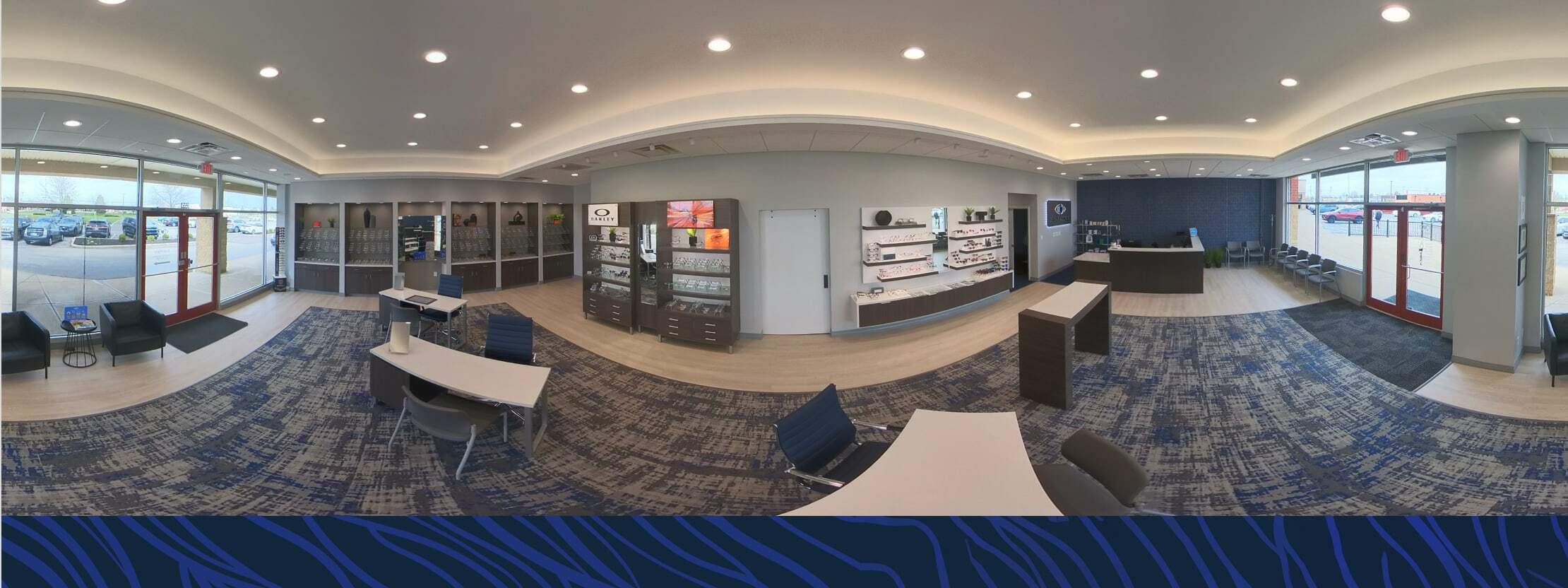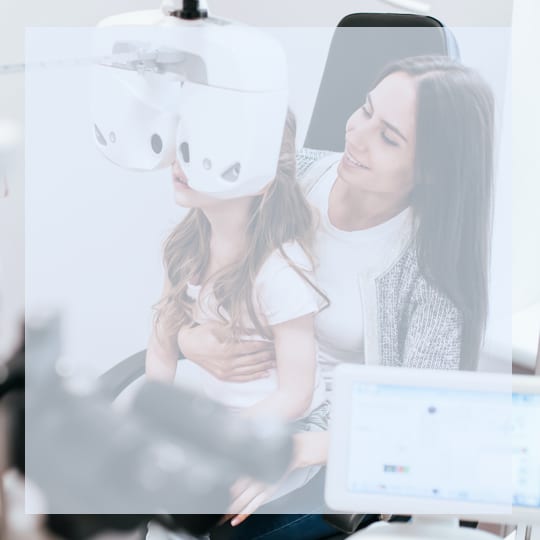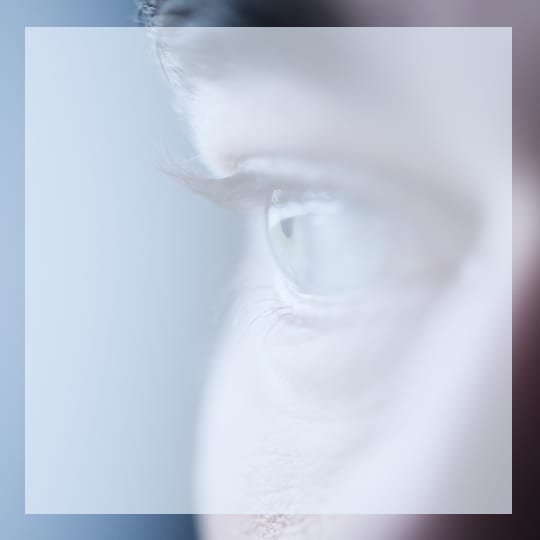

Digital Eye Strain Solutions in Loveland
Book AppointmentDon’t Let The Digital Outweigh The Visual
Digital eye strain is the fatigued sensation in the eyes following a long session in front of a digital screen. Our ocular systems can have trouble adjusting to today’s digital demands, which exposes our eyes to more and more devices and screens. Although modern lifestyles make computer screens a necessity, you don’t have to sacrifice visual comfort.
2020 EyeCare is focused on digital eye strain management. This relatively new eye condition requires adaptive testing practices from eye doctors who understand the vision demands in today’s society. If your eyes feel drained after a day at the office, it’s time to get them examined.

Have Your Eyes Reached Their Limit?
Also referred to as Computer Vision Syndrome (CVS), digital eye strain affects more Americans than ever before. Remote workspaces, virtual meetings, and everyday social media keep our eyes glued to digital screens all week long!
Don’t brush off changes in your vision after a long session at the computer.
Digital Eye Strain Symptoms
These symptoms are typical of digital eye strain and surface after extended periods with a digital screen. If you experience any of these symptoms consistently day to day, please schedule an eye examination.
- Dry eyes
- Headaches
- Eye fatigue
- Blurred Vision
- Neck pain
Counter CVS With Confident Eyewear
If you don’t currently use corrective eyewear, digital eye strain could be exaggerated with squinting and focus issues. You might struggle to see your screen in the first place because of an undiagnosed eye problem. Routine eye exams keep your prescription current and keep you aware of myopia.
Modern digital screens emit blue light. This type of light can affect your sleeping patterns and put stress on your eyes. 2020 EyeCare has a wide selection of frames that support blue light blocking lenses.
Help Conquer CVS at Home
Reducing the amount of time you spend in front of a screen can sometimes feel impossible. But there are some ways to help manage CVS at home. If these tips aren’t helping at all, it’s best to speak to one of our eye doctors and get a comprehensive eye exam.
Pay Attention to Posture
Posture can make a huge difference in the way your eyes and body feel after a computer session. Your computer screen should be at eye level, within an arm’s length (between 16-30 inches). Find a desk about 30 inches tall and set your computer screen to an 80-degree angle.
Your chair should be 16-20 inches tall, you need to sit up straight, and try using a footrest. If digital eye strain symptoms persist, it time for a comprehensive eye exam.
The 20-20-20 Rule
A simple tip that can greatly reduce the problems of overexposure to screens is the 20-20-20 rule.
Every 20 minutes, take a 20 second break, and look at something 20 feet away. That’s it. So take 20 seconds after reading this webpage.
Be Smart With Your Smartphone
Almost any modern device has a “night mode” or dark mode to reduce glaring blue lights. Your eyes will be thankful if you utilize this feature on all of your electronics.
Our Location
Find our office in the shopping plaza on the corner of Fields Ertel Road and Montgomery Road. We’re in between the Cricket Wireless and Cosmo Prof, and there is ample free parking available in the plaza.

Our Address
9553 Fields Ertel RdLoveland, OH 45140
Contact Information
- Phone: 513.428.2020
- Email: [email protected]
Hours of Operation
*We’re now open 1 Saturday a month! Please call ahead for availability.
Our Services

Comprehensive eye exams are the first step towards maintaining good ocular health and vision for as long as you can, and we can make that happen.
Learn More
Dry eye disease can make performing everyday activities extremely uncomfortable. At 2020 Eyecare Ohio, we can help you find relief.
Learn More
If you’re tired of dealing with glasses or contacts, LASIK may be a good option to consider, and we’ll be there with you every step of the way.
Learn More
Glaucoma is called the “Silent Thief of Sight” because it can occur without any noticeable symptoms. We’re here to help save your vision.
Learn MoreOur Brands





Our Google Reviews
Our Blog
What Is Commonly Misdiagnosed as Pink Eye?
Eye CareEye ConditionsWhat Is Commonly Misdiagnosed as Pink Eye?
Eye CareEye ConditionsWaking up with red, itchy eyes is enough to throw off anyone’s day. In many […]
Waking up with red, itchy eyes is enough to throw off anyone’s day. In many […]
Scleral Lenses for Dry Eyes: Comparing Contact Lens Options
Contact LensesDry EyesScleral Lenses for Dry Eyes: Comparing Contact Lens Options
Contact LensesDry EyesDry eyes can be frustrating at best and life-altering at worst. From the constant burning […]
Dry eyes can be frustrating at best and life-altering at worst. From the constant burning […]
Eye Pain in the Morning: Is It Time to See an Eye Doctor?
Eye ConditionsEye ExamsEye Pain in the Morning: Is It Time to See an Eye Doctor?
Eye ConditionsEye ExamsWaking up with sore or aching eyes isn’t the best way to start your day. […]
Waking up with sore or aching eyes isn’t the best way to start your day. […]


